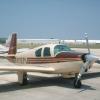How many ACTUAL LPV approaches do you do?
-
Members Online
- eman1200
- Falcon Man
- MatthiasArnold
- caa0428
- Rotorhead
- jeff.reynoljm
- TaildraggerPilot
- Danb
- Mooney-Shiner
- Sabremech
- jcolgan
- jcovington
- Ned Gravel
- bixmooney
- Cobraaviator78
- TNdebdriver
- TCC
- Schllc
- AH64Bennett
- affricate
- exM20K
- dzeleski
- Evant28
- AMG880
- Nico1
- FlyboyKC
- RangerM20
- M20F
- wombat
- hubcap
- JoeFFG9
- a.klein


Recommended Posts
Join the conversation
You can post now and register later. If you have an account, sign in now to post with your account.